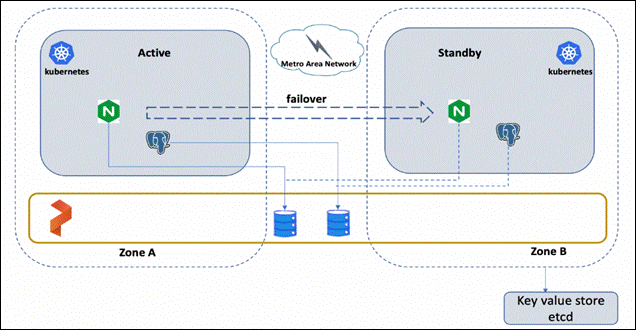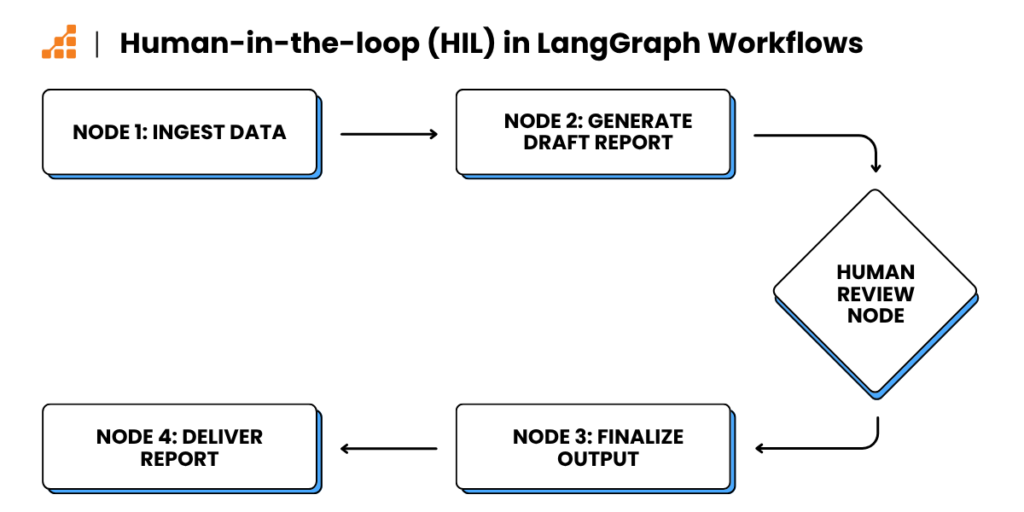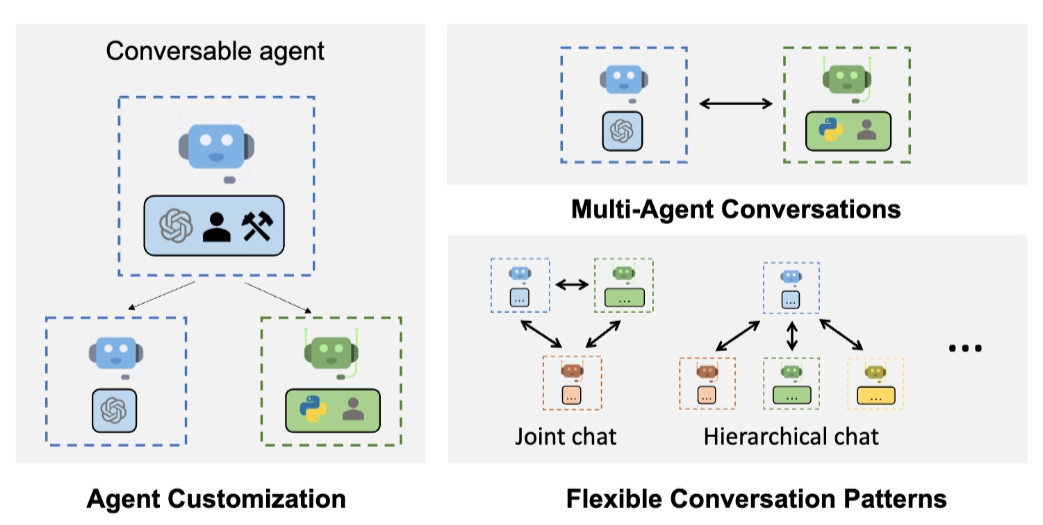Transforming Small Business Operations: The Ultimate Guide to Building Custom AI Agents
Empowering small businesses to compete with enterprise-level automation through accessible, custom AI solutions that deliver immediate ROI.
Understanding the AI Agent Revolution for Small Businesses
I've witnessed a remarkable transformation in how small businesses operate over the past few years. The emergence of AI agents has completely changed the game, allowing smaller operations to compete with much larger enterprises without massive technology investments.

What makes an AI agent truly "custom" versus off-the-shelf solutions? I define custom AI agents as intelligent systems specifically designed to address your unique business challenges, workflows, and customer interactions. Unlike generic solutions, these agents are tailored to understand your business context, speak your industry language, and integrate with your existing tools.
AI Accessibility Evolution
The democratization of AI has dramatically lowered barriers to entry:
This democratization has shifted the landscape dramatically. We've moved from an era where AI implementation required complex infrastructure and specialized talent to one where user-friendly development platforms make it accessible to virtually any business owner with a clear vision.
Case Study: The Corner Bakery
A family-owned bakery implemented a custom AI agent to manage inventory, predict daily product needs based on weather and local events, and handle online orders. The result? 32% reduction in waste, 45% increase in online sales, and staff time redirected to customer service. Total technology investment was less than $2,000.
Today's AI assistants are not just for tech giants with massive R&D budgets. They're accessible tools that small businesses can leverage to transform operations, enhance customer experiences, and drive growth without hiring an entire IT department.
Assessing Your Business Needs for Custom AI Implementation
Before diving into AI agent development, I always recommend conducting a thorough workflow analysis. This helps identify where automation can deliver the greatest impact for your specific business operations.
Workflow Analysis Process
A systematic approach to identifying automation opportunities:
flowchart TD
A[Document Current Workflows] --> B[Identify Time-Consuming Tasks]
B --> C[Measure Process Frequency]
C --> D[Calculate Error Rates]
D --> E[Evaluate Customer Impact]
E --> F[Prioritize Automation Opportunities]
style A fill:#FF8000,color:white
style F fill:#FF8000,color:white
When prioritizing business processes for AI enhancement, I focus on these key factors:
- Repetitive tasks that consume valuable employee time
- Error-prone processes where consistency is crucial
- Customer-facing interactions that could benefit from 24/7 availability
- Data-heavy decisions requiring analysis beyond human capacity
- Specialized knowledge application that could be systematized
Next, evaluate your current pain points to identify where AI agents could provide immediate ROI. Are you losing customers due to slow response times? Struggling with inventory management? Missing opportunities because of limited market research capacity?
Single-Function Bots vs. Multi-Agent Systems
| Consideration | Single-Function Bot | Multi-Agent System |
|---|---|---|
| Implementation Complexity | Low | Moderate to High |
| Initial Cost | Lower | Higher |
| Task Complexity Handled | Simple, focused tasks | Complex, multi-step workflows |
| Scalability | Limited | Extensive |
| Best For | Specific pain points, quick wins | Comprehensive business transformation |
When I'm working with small business clients, I've found that PageOn.ai's Vibe Creation tool is invaluable for articulating AI agent requirements without getting bogged down in technical jargon. This visual approach helps bridge the gap between business needs and technical implementation, allowing owners to clearly express what they want their AI agents to accomplish.

The assessment phase is crucial because it ensures your AI implementation addresses genuine business needs rather than simply adopting technology for its own sake. By clearly defining your requirements, you'll be positioned to select the right development approach and tools for your specific situation.
Essential Components of Effective Small Business AI Agents
In my experience building AI solutions for small businesses, I've identified several core components that deliver the highest value. These elements form the foundation of any effective AI agent implementation.
Core Components of Small Business AI Agents
flowchart TD
Core[AI Agent Core] --> NLP[Natural Language Processing]
Core --> Integration[Integration Layer]
Core --> Logic[Business Logic Engine]
Core --> Data[Data Processing]
Core --> Learning[Learning Mechanism]
NLP --> Intent[Intent Recognition]
NLP --> Entity[Entity Extraction]
Integration --> CRM[CRM Systems]
Integration --> Commerce[E-commerce Platforms]
Integration --> Messaging[Messaging Apps]
Logic --> Rules[Rule-based Workflows]
Logic --> Adaptive[Adaptive Responses]
Data --> Collection[Data Collection]
Data --> Analysis[Analysis & Insights]
Learning --> Feedback[User Feedback Loop]
Learning --> Improvement[Continuous Improvement]
style Core fill:#FF8000,color:white
style NLP fill:#42A5F5,color:white
style Integration fill:#66BB6A,color:white
style Logic fill:#EC407A,color:white
style Data fill:#AB47BC,color:white
style Learning fill:#FFA726,color:white
Integration capabilities are particularly crucial for small businesses that already rely on various digital tools. Your AI agents need to seamlessly connect with your existing tech stack to provide maximum value without creating additional data silos.
Essential Integration Points
- CRM Systems: Sync customer data, interactions, and follow-up tasks
- E-commerce Platforms: Access inventory, order status, and customer purchase history
- Email Services: Send notifications and process incoming requests
- Calendaring Tools: Schedule appointments and manage availability
- Payment Processors: Facilitate transactions and verify payment status
- Social Media Platforms: Monitor mentions and engage with customers
One of the most important balancing acts in AI agent development is finding the right mix between structured workflows and adaptive intelligence. I recommend starting with clearly defined processes but allowing your AI to learn and adjust its responses over time based on interactions and outcomes.
Value Distribution in AI Agent Capabilities
How different capabilities contribute to overall business value:
Data collection and analysis features are often overlooked but provide immense value. Your AI agents should not only perform tasks but also gather insights about your business operations, customer preferences, and market trends. These insights can drive strategic decision-making far beyond the immediate operational benefits of automation.
When building these components, I've found that PageOn.ai's AI Blocks provide an elegant solution for small businesses. This modular approach allows you to assemble agent capabilities without coding expertise, similar to building with digital Legos. Each block handles a specific function (like natural language understanding, data retrieval, or decision logic), and you can connect them visually to create sophisticated agent behaviors.

By focusing on these essential components, even the smallest businesses can build AI assistants for business that deliver meaningful results without requiring enterprise-level resources or technical expertise.
Step-by-Step Development Roadmap
Having guided numerous small businesses through AI implementation, I've developed a practical roadmap that balances thoroughness with speed-to-value. This approach helps ensure your AI agents deliver tangible benefits while minimizing development risks.
AI Agent Development Lifecycle
flowchart LR
A[Concept Definition] --> B[Prototype Development]
B --> C[User Testing]
C --> D[Refinement]
D --> E[Integration]
E --> F[Deployment]
F --> G[Monitoring & Optimization]
G -.-> D
style A fill:#FF8000,color:white
style G fill:#FF8000,color:white
1. Prototyping Your AI Agent Concept
I always start with a rapid prototype that demonstrates core functionality without getting bogged down in details. Visual builders and low-code platforms are perfect for this phase, allowing you to:
- Map basic conversation flows
- Define key user intents and agent responses
- Create simple decision trees for common scenarios
- Visualize how the agent will integrate with existing systems
2. User-Focused Design Principles
For maximum adoption within your team, I recommend these design principles:
- Match the agent's language to your team's natural vocabulary
- Align workflows with existing processes rather than forcing new ones
- Provide multiple interaction methods (text, buttons, forms) for different preferences
- Ensure clear paths to human assistance when needed
- Design for both novice and power users with appropriate shortcuts
3. Testing Protocols
Before deployment, implement these testing approaches to ensure reliability:
- Scenario-based testing covering common business situations
- Edge case identification and handling
- "Wizard of Oz" testing with human operators behind the scenes
- Limited user group piloting with detailed feedback collection
- Integration testing with all connected systems
4. Integration Strategies
For seamless embedding into daily workflows:
- Start with side-by-side operation alongside existing processes
- Gradually increase AI responsibility as confidence builds
- Provide clear documentation and training materials
- Designate "AI champions" within each team to support adoption
- Establish clear metrics to demonstrate value and encourage use

Throughout this development process, I've found PageOn.ai's Deep Search functionality to be incredibly valuable. It allows you to incorporate relevant business data and knowledge bases into your agent, ensuring it has access to the specific information that makes your business unique.
By following this structured roadmap, even small businesses with limited resources can develop effective AI agents that deliver meaningful business impact while minimizing development risks and ensuring strong user adoption.
Building Custom AI Agents Without Technical Expertise
One of the most exciting developments I've witnessed in recent years is how accessible AI agent development has become. Today, small business owners without programming skills can build sophisticated AI solutions using no-code and low-code platforms specifically designed with non-technical users in mind.
Platform Comparison: Technical Requirements vs. Capability
When evaluating platforms for your small business, I recommend looking for these key features:
Visual Builders
Drag-and-drop interfaces that allow you to map out conversation flows, decision trees, and process logic without writing code.
Pre-built Templates
Starting points for common use cases like customer service, appointment scheduling, or lead qualification that you can customize.
Integration Marketplaces
Easy connections to popular business tools without requiring API knowledge or custom development.
Testing Simulators
Built-in tools to test conversations and workflows before going live with real users.
Analytics Dashboards
Easy-to-understand performance metrics and usage statistics without requiring data analysis skills.
Knowledge Base Connectors
Tools to easily import your business information, FAQs, and documents to train your AI agent.
When comparing deployment options, you'll typically choose between:
| Factor | Hosted Solutions | Self-Managed Infrastructure |
|---|---|---|
| Initial Setup | Minutes to hours | Days to weeks |
| Technical Requirements | Minimal | Significant |
| Ongoing Maintenance | Handled by provider | Your responsibility |
| Customization Depth | Platform-dependent | Unlimited |
| Cost Structure | Subscription-based | Upfront investment + ongoing |
| Best For | Most small businesses | Businesses with unique security or compliance needs |
Cost considerations are naturally important for small businesses. When calculating ROI for different development approaches, I recommend factoring in:
- Direct costs: Platform fees, development time, integration expenses
- Time savings: Hours saved by automating manual processes
- Error reduction: Cost avoidance from fewer mistakes
- Extended availability: Value of 24/7 service capability
- Customer satisfaction: Retention improvements from better service
- Scalability benefit: Ability to handle volume increases without proportional cost increases

In my experience working with small businesses, PageOn.ai stands out by transforming complex agent design into intuitive visual workflows. Their approach focuses on making AI development accessible to business owners who understand their needs but lack technical expertise. This democratization is what truly enables small businesses to compete with larger enterprises in the AI space.
Specialized AI Agents for Common Small Business Functions
Throughout my career helping small businesses implement AI, I've seen certain types of specialized agents consistently deliver exceptional value. These purpose-built assistants address common business functions with remarkable efficiency.
Customer Service Agents
These agents handle customer inquiries, troubleshoot common issues, and provide 24/7 support coverage. They can resolve up to 80% of routine questions without human intervention.
- FAQ response automation
- Order status tracking
- Return/exchange processing
- Intelligent human handoff
Sales Outreach Agents
These agents qualify leads, nurture prospects, and schedule appointments for your sales team. They ensure no opportunity falls through the cracks.
- Lead qualification workflows
- Personalized follow-up sequences
- Meeting scheduling automation
- Prospect engagement tracking
Scheduling Agents
These agents manage appointments, send reminders, and reduce no-shows. They handle the administrative overhead of scheduling so your team can focus on service delivery.
- Multi-channel booking capabilities
- Automated reminder sequences
- Rescheduling management
- Resource allocation optimization
Research Agents
These agents gather competitive intelligence, monitor industry trends, and provide market insights. They help you stay informed without spending hours on research.
- Competitor price monitoring
- Industry news aggregation
- Trend analysis and reporting
- Customer sentiment tracking
Financial Monitoring Agents
These agents track expenses, flag unusual transactions, and generate financial reports. They provide timely insights into your business's financial health.
- Cash flow monitoring
- Expense categorization
- Invoice processing
- Financial anomaly detection
Content Creation Assistants
These agents help generate marketing content, social media posts, and product descriptions. They maintain your brand voice while scaling content production.
- Social media content generation
- Email campaign creation
- Product description writing
- Content performance analytics
ROI Comparison by Agent Type
Average return on investment after 6 months:
When implementing these specialized agents, I've found that PageOn.ai's agentic capabilities provide a significant advantage. Their platform allows you to create agents that truly understand your business context—not just perform predefined tasks. This contextual intelligence means your agents can make more nuanced decisions, adapt to changing situations, and deliver more value than simple rule-based automation.

The key to success with these specialized agents is focusing on specific business functions rather than trying to build a single agent that does everything. This targeted approach allows for deeper capability development, more accurate performance, and clearer ROI measurement for each business function you enhance with AI.
Advanced Implementation: Creating Multi-Agent Systems
As your business grows and your AI capabilities mature, I've found that many small businesses benefit from moving beyond single-purpose agents to coordinated multi-agent systems. These networks of specialized agents can collaborate across business functions to handle complex workflows that span multiple departments or processes.
Multi-Agent System Architecture
flowchart TD
subgraph "Customer Engagement Layer"
A1[Customer Service Agent]
A2[Sales Agent]
A3[Appointment Agent]
end
subgraph "Operational Layer"
B1[Inventory Agent]
B2[Logistics Agent]
B3[Financial Agent]
end
subgraph "Intelligence Layer"
C1[Research Agent]
C2[Analytics Agent]
end
subgraph "Human Oversight"
D[Management Dashboard]
end
A1 --> B1
A1 --> B3
A2 --> B1
A2 --> B2
A3 --> B2
B1 --> C2
B2 --> C2
B3 --> C2
C1 --> D
C2 --> D
B1 -.-> A1
B2 -.-> A2
B2 -.-> A3
style A1 fill:#FF8000,color:white
style A2 fill:#FF8000,color:white
style A3 fill:#FF8000,color:white
style B1 fill:#42A5F5,color:white
style B2 fill:#42A5F5,color:white
style B3 fill:#42A5F5,color:white
style C1 fill:#66BB6A,color:white
style C2 fill:#66BB6A,color:white
style D fill:#AB47BC,color:white
When designing agent networks that collaborate across functions, I recommend these key principles:
1. Clear Responsibility Boundaries
Each agent should have well-defined responsibilities with minimal overlap. This clarity prevents conflicts and ensures accountability for specific tasks or decisions.
2. Standardized Communication Protocols
Establish consistent formats for how agents share information, request actions, and report results. This standardization ensures smooth handoffs between different agents in the system.
3. Centralized Knowledge Repository
Create a shared knowledge base that all agents can access, ensuring consistency in information across your entire system. This prevents contradictions and fragmented customer experiences.
4. Escalation Pathways
Define clear paths for when and how agents should escalate issues they can't resolve, either to other agents with different capabilities or to human team members.
Managing workflow handoffs between human team members and AI agents is one of the most critical aspects of successful implementation. I recommend these strategies:
| Handoff Type | Best Practices |
|---|---|
| AI-to-Human |
|
| Human-to-AI |
|
| AI-to-AI |
|
For critical decisions or actions, implementing approval systems for human oversight is essential. I recommend a tiered approach:
Human Oversight Model
flowchart TD
A[AI Decision Point] --> B{Risk Level?}
B -->|Low Risk| C[Automatic Execution]
B -->|Medium Risk| D[Notify with Time Window]
B -->|High Risk| E[Require Explicit Approval]
C --> F[Action Completed]
D --> G{Human Response?}
G -->|Approved| F
G -->|Rejected| H[Action Cancelled]
G -->|No Response| F
E --> I{Human Decision}
I -->|Approved| F
I -->|Rejected| H
style A fill:#FF8000,color:white
style B fill:#42A5F5,color:white
style E fill:#EC407A,color:white
Visualizing complex agent interactions is crucial for both development and ongoing management. PageOn.ai's structured visual tools excel at mapping these relationships, making it easier to understand how your multi-agent system operates as a cohesive whole rather than disconnected parts.

By thoughtfully designing these multi-agent systems, even small businesses can implement sophisticated automation that spans entire business processes. The key is starting with well-designed individual agents and then carefully orchestrating their interactions to create a system that's greater than the sum of its parts.
Measuring Success and Continuous Improvement
Throughout my career implementing AI for small businesses, I've learned that measurement is what transforms AI from a technological novelty into a strategic business asset. Establishing the right KPIs helps you evaluate performance, justify investment, and guide ongoing refinement of your AI agents.
Key Performance Indicators by Business Function
Implementing feedback loops for ongoing refinement is essential for long-term success. I recommend these specific mechanisms:
User Feedback Collection
Build simple rating systems into agent interactions, allowing users to quickly score effectiveness. Follow up high or low ratings with optional detailed feedback questions.
Failure Point Analysis
Systematically review instances where agents couldn't complete tasks or required human intervention. Look for patterns that indicate areas for improvement.
A/B Testing Framework
Test alternative approaches for important agent functions with controlled experiments. Compare performance metrics to continuously optimize responses and workflows.
Regular Stakeholder Reviews
Schedule monthly reviews with key users from different departments to gather qualitative insights about agent performance and identify new opportunity areas.
Analyzing metadata from agent interactions often reveals unexpected optimization opportunities. I look for these specific insights:
Metadata Analysis Framework
flowchart TD
A[Collect Interaction Metadata] --> B[Temporal Analysis]
A --> C[Pattern Recognition]
A --> D[User Segmentation]
A --> E[Channel Performance]
B --> F[Peak Usage Times]
B --> G[Response Time Variations]
C --> H[Common Failure Points]
C --> I[Frequent Request Sequences]
D --> J[Power User Behaviors]
D --> K[Adoption Barriers]
E --> L[Channel Effectiveness]
E --> M[Cross-Channel Journeys]
F & G & H & I & J & K & L & M --> N[Optimization Opportunities]
style A fill:#FF8000,color:white
style N fill:#FF8000,color:white
As your business grows, scaling your AI implementation requires thoughtful planning. I recommend these approaches:
- Modular expansion: Add new agent capabilities in discrete modules that integrate with your existing system
- Capacity planning: Monitor usage patterns and performance metrics to anticipate when infrastructure upgrades are needed
- Progressive automation: Identify manual processes still being performed alongside AI and evaluate them for next-phase automation
- Knowledge expansion: Regularly update agent knowledge bases to reflect new products, services, policies, and market conditions
- Cross-training: Ensure multiple team members understand how to maintain and enhance your AI systems
Version control strategies are often overlooked but critical for managing agent evolution. I've found that treating AI agents like software products—with proper versioning, testing, and rollback capabilities—prevents disruption when making enhancements. This approach also helps track which changes deliver the most significant improvements.

The continuous improvement cycle is what transforms a good AI implementation into a great one. By systematically measuring performance, gathering feedback, analyzing metadata, and making incremental improvements, you ensure your AI agents evolve alongside your business needs and continue delivering increasing value over time.
Future-Proofing Your Small Business AI Strategy
As I work with small businesses on their AI implementations, I always emphasize the importance of building with the future in mind. The AI landscape is evolving rapidly, and your strategy should position you to take advantage of emerging capabilities without requiring complete rebuilds.
Emerging AI Agent Capabilities
Projected adoption timeline for small businesses:
To prepare for increased autonomy and capability in next-generation agents, I recommend these strategic approaches:
Tiered Autonomy Framework
Design your systems with configurable autonomy levels that can be adjusted as technology and trust evolve. Start conservative and increase autonomy gradually as performance proves reliable.
API-First Architecture
Build your agent infrastructure with clean APIs between components, making it easier to upgrade individual capabilities or connect to new services without disrupting the entire system.
Continuous Learning Pipeline
Implement systems that can incorporate new training data and improve over time, rather than static agents that will eventually become outdated.
Multimodal Design
Even if you start with text-only interactions, design your architecture to eventually support voice, image, and video inputs/outputs as these capabilities become more accessible.
Ethical considerations are increasingly important as AI agents become more capable. I advocate for these best practices in responsible AI deployment:
Ethical AI Implementation Checklist
- Transparency: Clearly disclose when customers are interacting with AI rather than humans
- Data Privacy: Implement strong data protection measures and clear retention policies
- Fairness: Regularly test for and mitigate bias in agent responses and decision-making
- Human Oversight: Maintain appropriate human supervision, especially for consequential decisions
- Value Alignment: Ensure agent behaviors reflect your business values and ethical standards
- Accessibility: Design agent interactions to be usable by people with diverse abilities
- Accountability: Establish clear responsibility chains for AI actions and decisions
Building adaptable systems that can incorporate new AI breakthroughs is essential for long-term success. I recommend this approach to future-proofing:
Adaptable AI Architecture
flowchart TD
A[Business Logic Layer] --- B[Agent Orchestration Layer]
B --- C[Foundation Model Layer]
B --- D[Specialized Model Layer]
B --- E[Knowledge Layer]
C --- F[Model API Abstraction]
D --- F
F --- G[Model Provider 1]
F --- H[Model Provider 2]
F --- I[Model Provider 3]
style A fill:#FF8000,color:white
style B fill:#FF8000,color:white
style F fill:#42A5F5,color:white
Creating a competitive advantage through strategic AI agent implementation requires thinking beyond simple automation. The most successful small businesses I've worked with view AI as a core differentiator that transforms their customer experience, operational efficiency, and decision-making capabilities. By focusing on your unique business context and customer needs, you can build AI agents that not only perform tasks but also embody your distinctive approach and values.

The future belongs to businesses that can effectively harness AI capabilities while maintaining their human touch and distinctive value. By building custom AI agents that reflect your unique business approach and continuously evolve with technology advancements, you position your small business to compete and thrive in an increasingly AI-powered marketplace.
Transform Your Business Operations with PageOn.ai
Ready to build custom AI agents that perfectly match your small business needs? PageOn.ai's visual tools make it easy to design, implement, and manage intelligent agents without technical expertise.
Start Creating with PageOn.ai TodayEmbracing the AI Agent Revolution
Throughout this guide, I've shared my experience helping small businesses implement custom AI agents that deliver real business value. The democratization of AI technology has created an unprecedented opportunity for small businesses to access capabilities that were previously available only to large enterprises with substantial resources.
By following the roadmap outlined here—from assessing your business needs and selecting the right components to implementing specialized agents and measuring their impact—you can transform your operations, enhance customer experiences, and create competitive advantages that drive growth.
As you embark on your AI implementation journey, remember that the goal isn't technology for its own sake but solving real business problems and creating genuine value. Start small, focus on clear ROI, and build on your successes as your confidence and capabilities grow.
The future of small business is intelligent, adaptive, and increasingly augmented by custom AI agents. With tools like PageOn.ai making these capabilities accessible without technical expertise, there's never been a better time to begin transforming your business operations through the power of custom AI.
You Might Also Like
Multi-Format Conversion Tools: Transforming Modern Workflows for Digital Productivity
Discover how multi-format conversion tools are revolutionizing digital productivity across industries. Learn about essential features, integration strategies, and future trends in format conversion technology.
Transform Raw Text Data into Compelling Charts: AI-Powered Data Visualization | PageOn.ai
Discover how AI is revolutionizing data visualization by automatically creating professional charts from raw text data. Learn best practices and real-world applications with PageOn.ai.
Mastering Workplace Communication with International Phonetic Alphabet (IPA) - Visual Guide
Discover how the International Phonetic Alphabet transforms workplace communication. Learn visual approaches to implement IPA for clearer global business interactions.
From Boardroom to Brilliance: Master Real Story Techniques for Corporate Speakers
Discover powerful real story techniques for corporate speakers that increase memorability by 22x. Learn authentic storytelling methods, visualization strategies, and delivery techniques for business impact.
